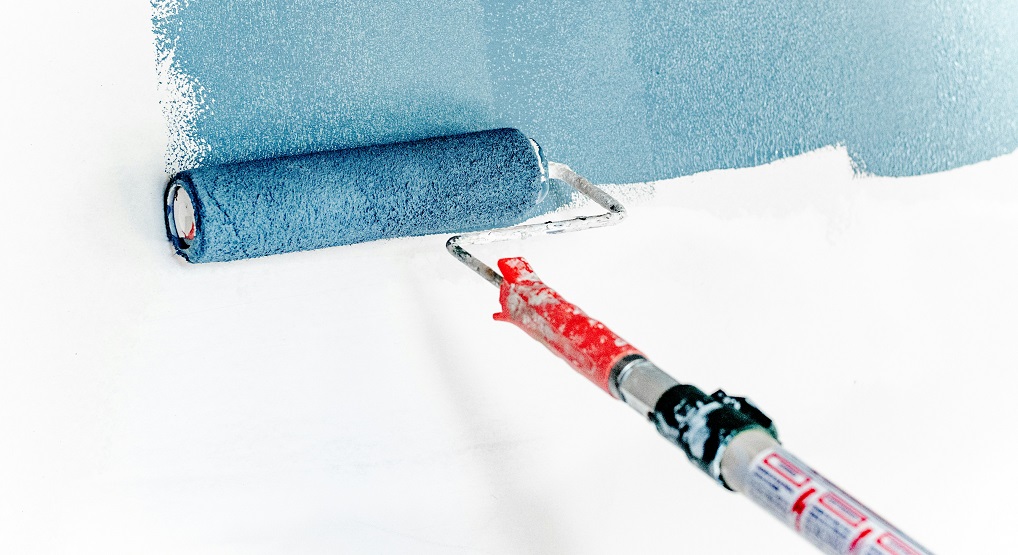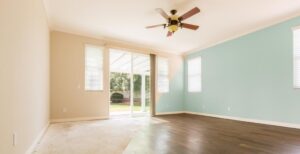It’s common for people to make their walls smoother with paint. However, it makes the walls look very plain and simple, which is why some people opt for textured paint.
Truth be told, it can be challenging to apply textured paint on your walls because we don’t know how to prepare the walls. So, with this article, we are sharing how you can use textured paint in your home and improve the interiors of your home even if you don’t want a professional painting service.
We will share different types of texture paint that you can use for the home. The good thing about textured paint is that it adds a lot of character and depth to the home. However, choosing the right one can be difficult if you don’t have a professional painting service. Now, let’s have a look at the details!
Types of Textured Paint
The textured paint is used by a professional painting service that wants to hide small imperfections on their home walls and add a unique look. This is because the textured paint adds an aesthetic value, which is why it’s widely used for accent walls. In addition, applying a single coat of textured paint will add personality to your home. So, let’s have a look at different types of textured paints.
Smooth Textured Paint
This might sound like a contradictory statement. However, when it comes down to the paint finishes, the smooth textured paint is the one that has a mild or subtle texture. It’s not very gritty or rough, but there will be much-needed tactility on the wall. In simpler words, this paint won’t be textured like orange peel and sand paint. However, it won’t be very flat either.
Sand Texture Paint
This paint has silica sand particles, which lead to a rough and gritty texture. This is perfect for a professional painting service who wants to add a rustic look to their walls. However, this paint is difficult to apply because you’ve to mix it properly. You can use the brush or a thick nap roller to apply this paint – it is important to ensure consistent coverage of the walls. Also, remember that it will need proper drying time.
Venetian Plaster
This paint is a promising choice for people who want a multi-layered and polished appearance. That’s because it offers a smooth and deep texture that almost resembles marble. To use this paint, the walls should be clean and smooth. Using a stainless steel trowel is better because it helps apply a thin layer as a professional painting service. In addition, you’ve to use small strokes as you need to build up layers for the right effect.
Popcorn Texture
This paint is used for ceilings because it helps achieve a stippled and bumpy appearance. For this paint, a texture spray gun is used because it helps achieve the right texture. In particular, the paint mix will be applied to the surface. Once it is properly dried, it looks like you’ve plastered popcorn over the walls.
Knockdown Texture
This paint is usually sprayed onto the ceiling or walls. However, before it is properly dried, it is knocked down or smoothed down with the help of a trowel. As a result, it helps achieve a unique texture that looks like valleys and peaks. It looks pretty subtle, but there are no compromises in depth.
Orange Peel Texture
It has a surface that looks a bit like orange skin, with small bumps and different textures. With a texture sprayer, hopper gun, and air compressor, you can spray drywall cement and water onto the wall to make it look that way. After it’s been put on, it needs to dry completely before painting.
Brushed-On Texture
To get brushed-on texture, you use a brush to make patterns on the wall, such as stippled, brushed, or wavy ones. Depending on the method and brush used, a lot of different styles can be made.
Roll-On Texture
These are thick paints that are rolled on with a brush. Different designs can be made by a professional painting service, ranging from soft to strong, depending on the product and roller used.
Fabric and Fibers Texture
When applied to walls, fabric & fiber textures’ threads make them look like fabric or rough canvas. They are usually put on with a roller or brush, and when they dry, they leave behind a rough, three-dimensional finish.
Stone or Granite Finish
Stone or granite finish paints have tiny bits in them that make the paint look like stone or granite when it’s dry. Most of the time, a roller or brush is used to apply these. For extra sturdiness, some may need a sealant.
A Stippled Finish
To get a stipple Finish, paint or drywall compound the surface and then use a stippling brush or sponge to give it a dotty look. To use this method as a professional painting service, you keep dabbing the brush on the wet surface until you get the look you want.
Combed Texture
To make combed texture, you can use combs, brushes, or other special tools to make patterns in wet paint. With this method of professional painting service, the wall gets a design of grooves or lines that move rhythmically.
Suede
Suede Finish gives a surface a soft, matte look that looks like suede fabric. Usually, this finish needs a special paint and way of applying it. For example, a professional painting service might use a roller for the base coat and a brush for the gloss to make it look like suede, which has a soft, multi-tonal look.
How to Choose the Best Textured Professional Painting Service for Your Home
- Visual Texture: Textured paints come in various forms, from smooth and subtle to bold and dramatic. Think about the overall feel you want for the space. Here are some popular choices:
- Color: Lighter colors tend to highlight the texture, while darker colors can downplay it. Consider getting samples and testing them on a small area to see how the paint color and texture interact with your lighting.
- Hiding Imperfections: Textured paints can effectively mask minor wall imperfections like small cracks or uneven surfaces. Opt for coarser textures like sand finishes for better coverage.
- Washability: High-traffic areas like kitchens, bathrooms, or children’s rooms benefit from textured paints that are easy to clean. Avoid rough textures that trap dust and grime.
The Bottom Line
This article must have given you enough information about different types of texture paints. In addition, we provided details about choosing the right paint as well. So, you can get started with the paint right away. However, if you need help, you can also connect with Apex Paint Pros because they handle everything to perfection as a professional painting service.








